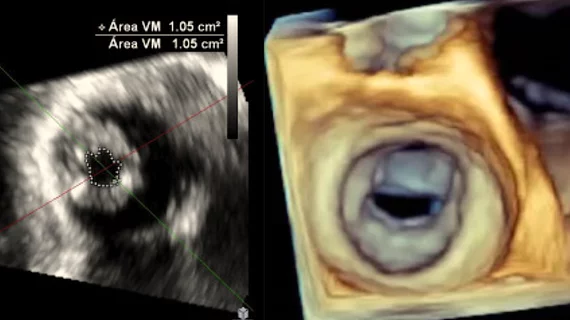ASE releases updated rheumatic heart disease guideline
The American Society of Echocardiography (ASE) released a new guideline document that provides recommendations for the comprehensive use of echocardiography in the diagnosis and therapeutic intervention of acute rheumatic fever and rheumatic heart disease (RHD). This document was endorsed by 25 ASE International Alliance Partners and is published in the January 2023 issue of the Journal of the American Society of Echocardiography.[1]
The document, Recommendations for the Use of Echocardiography in the Evaluation of Rheumatic Heart Disease: A Report from the American Society of Echocardiography, is an update to previous guideline documents originally published in 2007 and 2009 that focused on valvular stenosis or valvular regurgitation etiology. This new guideline is the first document that addresses all cardiac abnormalities caused by RHD.
“RHD is a global and regional burden in both economically constrained and advanced countries," explained lead author Natesa G. Pandian, MD, FACC, in a statement from ASE. He is director of the Nancy and Bill Thompson Heart Valve Center, director of noninvasive cardiac imaging at Hoag, Newport Beach, California, and a professor of medicine and staff cardiologist at Tufts University in Boston.
"The disease can evolve anywhere where there is a lack of sanitary conditions, access to primary care and health education,” he said. “It starts with a sore throat and fever, and if it is not recognized as a streptococcal infection and treated, it can go on to cause rheumatic fever, cardiac inflammation, and chronic heart disease with a spectrum of debilitating lesions. Often, chronic lesions are recognized late because of slowly evolving symptoms. Echocardiography, with its multifaceted imaging approach, plays a critical role in the diagnosis, assessment of severity, detection of complications and in guiding therapy.”
Acute rheumatic fever and its chronic sequela, RHD, pose major health problems globally. It remains the most common cardiovascular disease in children and young people worldwide. The ASE said echocardiography is the most important diagnostic tool in recognizing this preventable and treatable disease, and it plays an invaluable role in detecting the presence of subclinical disease needing prompt therapy or follow-up assessment. This document provides recommendations for the comprehensive use of echocardiography in the diagnosis and therapeutic intervention of RHD. Echocardiographic diagnosis of RHD is made when typical findings of valvular and subvalvular abnormalities are seen, including commissural fusion, leaflet thickening and restricted leaflet mobility, with varying degrees of calcification.
The disease primarily affects the mitral valve, most often leading to mitral stenosis. Mixed valve disease and associated cardiopulmonary pathology are also common.
The revised guidelines say the severity of valvular lesions and hemodynamic effects on the cardiac chambers and pulmonary artery pressures should be rigorously examined. Intra-procedural echocardiographic guidance is critical during catheter-based or surgical treatment of RHD, as is echocardiographic surveillance for post-intervention complications or disease progression. The guidelines explained the role of echocardiography throughout the entire spectrum of RHD management.
This document and all guidelines published by ASE are available at ASEcho.org/Guidelines.

